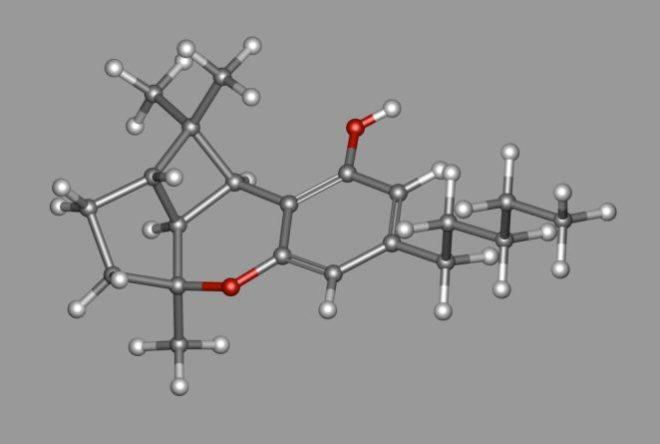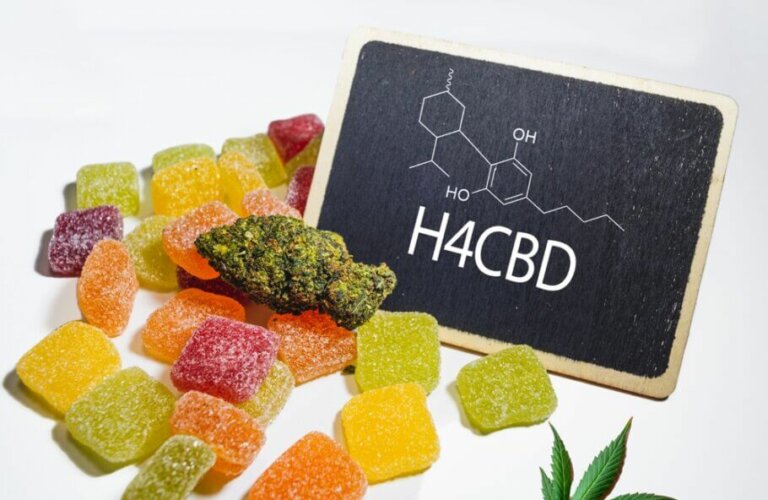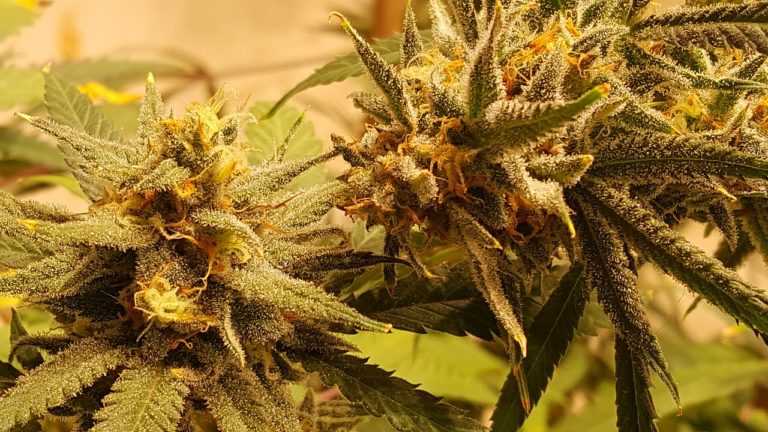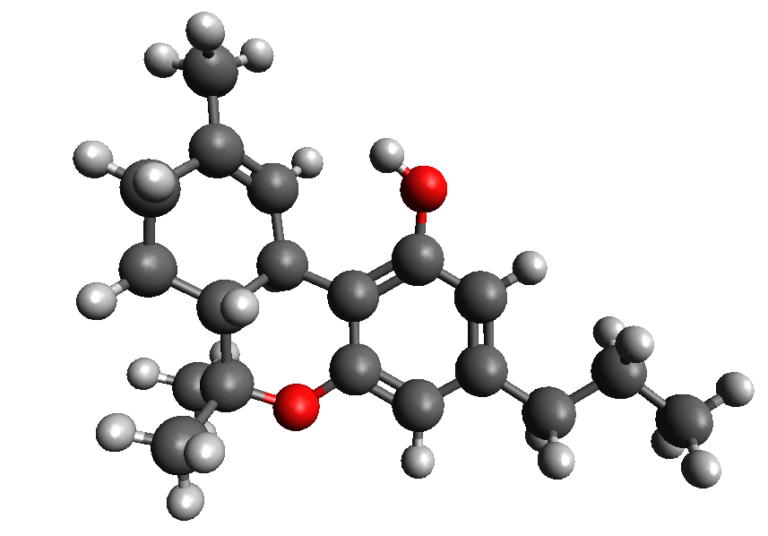Cannabinol (CBN): The Cannabinoid Against Insomnia
List of contents
What is CBN?
- Name: Cannabinol
- Formula: C21H26O2
- IUPAC name: 6,6,9-trimethyl-3-pentylbenzo [c] chromen-1-ol
- Molecular mass: 310.4319 g / mol
- Melting point: 77 ° C
- Boiling point: 185 ° C
- Presence at room temperature: Solid, crystalline and colorless
CBN or cannabinol is one of the most important compounds found in cannabis, along with THC or CBD. Although the proportion of CBN is usually quite low (no more than 1%), especially when compared to the main psychoactive component of the plant, THC (which can reach almost 30%), this cannabinoid has a number of therapeutic properties of great value for a multitude of medicinal users, which has led to studies and tests on the possible applications of CBN becoming increasingly numerous.
CBN is a cannabinoid produced exclusively by the cannabis plant, and it can not be found in any other plant species. Its psychoactivity is low, which for many medicinal users represents a great advantage, and it is believed to be the cause of the sedative and narcotic effect of some varieties of cannabis, in addition to being a partial agonist of the CB1 and CB2 receptors, being somewhat more linked with the CB2 receptor (inhibits adenylate cyclase). It is a molecule that is readily dissolved in fats or the various solvents used to make cannabis resin extractions, being hydrophobic (water repellent) and lipophilic (having affinity for lipids).
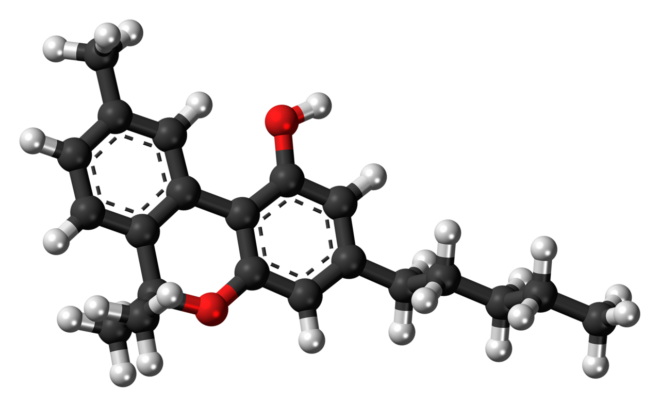
Synthesis of cannabinol (CBN)
Like many other cannabinoids, cannabinol or CBN is synthesized from CBGA, the acid form of CBG. From the CBGA the plant synthesizes THCA, subsequently from this the CBNA is synthesized, and finally from this comes the CBN. However, most of the cannabinol found in cannabis doesn't come from the decarboxylation of its acid form, CBNA, but instead from the degradation of THC. Let's take a close look at how this process happens:
Cannabis plants produce enzymes (also called synthases) that transform CBGA (naturally produced by cannabis) into the most popular cannabinoids, such as THCA, CBDA or CBCA. Prolonged exposure to air (oxidation) causes the THCA molecule to become CBNA. In turn, if the acid form of cannabinol (CBNA) is subjected to heat or ultraviolet rays, it will convert to CBN, the active, decarboxylated form of the compound.
So, CBNA is produced by a direct degradation of THCA, whose formula is very similar (C21H30O2). When we harvest and store cannabis, the THCA molecules are gradually degraded (the rate of degradation will depend on the storage conditions of the material) and lose 4 hydrogen atoms (precisely those that give the prefix "tetrahydro" to the compound), thus producing both THC (the non-acid form of the compound) as CBNA. Over time (oxidation, heat) the CBNA will decarboxylate, so the amount of CBN will increase as the material ages, incrementing the sedative properties of the material.
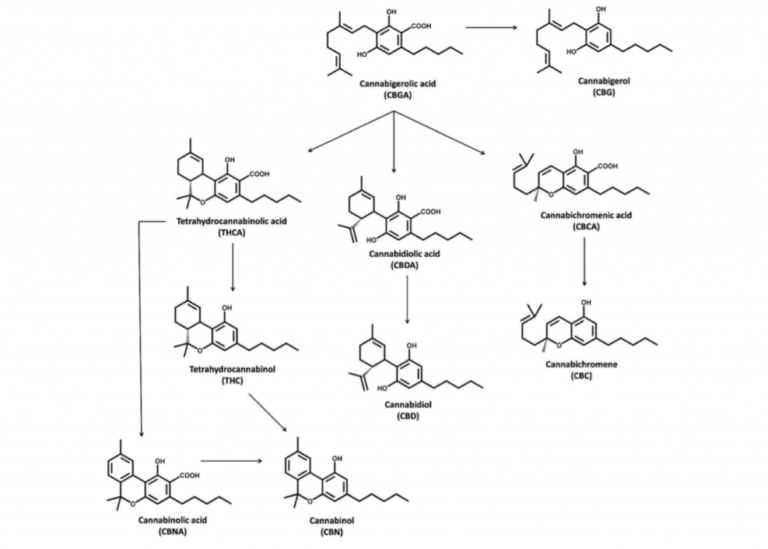
As we see, we can increase the amount of CBN in our plant material (or extraction) simply by harvesting our plants somewhat later than we normally would, with predominantly amber trichomes) and allowing it to oxidize once dry, in other words, simply not storing it in the normal way to best preserve its qualities, and not using hermetic or vacuum-sealed containers. The older and more oxidized the weed or hash, the higher the content of CBN, and therefore the more notable its effects.
So, strangely enough it's the most poorly preserved buds, maybe those forgotten in the bottom of a drawer for months, that are usually the ones with the highest CBN content, especially if the variety itself already contained a small amount of this compound. The more oxidation there is, the more of the THC will degrade in CBN. If we're searching for the highest possible concentrations of CBN, it's well worth cultivating Indica varieties, as these normally already have the highest CBN content. Of course, there are particular varieties that naturally produce more CBN than others, for example, Black Jack by Sweet Seeds or Fresh Candy by Pyramid Seeds.
Properties and effects of cannabinol (CBN)
Although the main feature of CBN is its sedative effect, ideal for combating sleep apnea, insomnia, or other sleeping disorders, this cannabinoid also has other therapeutic properties that could be useful in the treatment of a wide range of ailments and diseases, As several studies have shown:
- Sedative effect (promotes sleep and increases sleep hours)
- Antiemetic effect (nausea and vomiting)
- Reduction of pain (chronic pain, fibromyalgia, etc.)
- Antibacterial effect
- Promotes the growth of bone cells (potential to treat fractures)
- Anti-convulsive effect (Parkinson's, multiple sclerosis, epilepsy, Tourette's syndrome, etc.)
- Stimulates appetite (chemotherapy, AIDS, appetite disorders)
- Anti-inflammatory effect (Ulcerative colitis)
- Decreases intra-ocular pressure (Glaucoma)
- Control of the growth of cutaneous cells (treatment of burns, psoriasis, etc.)
- Cannabis very cured or rich in CBN helps to fall asleep
- Cannabis very cured or rich in CBN helps to fall asleep

In a recent study, Steep Hill Labs concluded that 5mg of CBN was just as effective as 10mg of Diazepam, a drug (benzodiazepine) that is usually prescribed to treat anxiety, seizures, or spasms. In addition, the use of CBN in combination with other cannabinoids with enormous therapeutic potential, such as THC or CBD, is also being studied. It appears that the pharmacokinetic interaction between the medicinal properties of CBD and CBN (or even between the three) could provide effective medication to relieve pain and reduce inflammation. Furthermore, as has been known for some time, cannabinoids and terpenes work together synergistically to enhance or modulate their respective properties in what is called the entourage effect or ensemble effect.
The future of CBN
As we see, cannabinol, or CBN is a barely psychoactive cannabinoid with tremendous therapeutic potential, making it an ideal alternative for those who don't want to feel the side effects of THC when treating their medical conditions. It is certainly the most sedating and relaxing cannabinoid, something that can help thousands of people around the world with sleeping disorders. Naturally, the scientific community is aware of this, and more and more studies are expected to focus on this interesting compound (many of the trials are currently in the animal testing phase).
Given its characteristics and effects, in the near future we can expect to enjoy products with high concentrations of CBN, just as today we already find a wide range of products rich in CBD such as oils, capsules, groceries, creams, and even e-liquids, which are helping to improve the quality of life for thousands of users. Also, some cannabis breeders are already working on varieties rich in CBN, which will undoubtedly help the development of a new branch of the pharmaceutical and cosmetic industry based on this cannabinoid.
Let's hope it won't be long!
Studies and publications on CBN consulted for the writing of this article:
- Taming THC: potential cannabis synergy and phytocannabinoid-terpenoid entourage effects. Ethan B. Russo
- Biosynthesis of cannabinoid acids. Yukihiro Shoyama, Masahiro Yagi, Itsuo Nishioka
- Antibacterial cannabinoids from Cannabis sativa: a structure-activity study. Appendino G, Gibbons S, Giana A, Pagani A, Grassi G, Stavri M, Smith E, Rahman MM
- Cannabinoids stimulate fibroblastic colony formation by bone marrow cells indirectly via CB2 receptors. Scutt A, Williamson EM
- Complex pharmacology of natural cannabinoids: evidence for partial agonist activity of delta9-tetrahydrocannabinol and antagonist activity of cannabidiol on rat brain cannabinoid receptors. Petitet F, Jeantaud B, Reibaud M, Imperato A, Dubroeucq MC
- ?9-Tetrahydrocannabinol and Cannabinol Activate Capsaicin-Sensitive Sensory Nerves via CB1 and CB2 Cannabinoid Receptor-Independent Mechanism. Peter M. Zygmunt, David A. Andersson and Edward D. Högestätt
- Cannabinol and cannabidiol exert opposing effects on rat feeding patterns. Farrimond JA1, Whalley BJ, Williams CM
- Cannabidiol, Major Non-Psychotropic Cannabis Constituent Enhances Fracture Healing and Stimulates Lysyl Hydroxylase Activity in Osteoblasts. Kogan NM, Melamed E, Wasserman E, Raphael B, Breuer A, Stok KS, Sondergaard R, Escudero AV, Baraghithy S, Attar-Namdar M, Friedlander-Barenboim S, Mathavan N, Isaksson H, Mechoulam R, Müller R, Bajayo A, Gabet Y, Bab
- Cannabinoids inhibit human keratinocyte proliferation through a non-CB1 / CB2 mechanism and have a potential therapeutic value in the treatment of psoriasis. Wilkinson JD, Williamson EM
- Long - term Storage and Cannabis Oil Stability. Irenne Gabriela Trofin, Gabriel Dabija, Danut-Ionel Vaireanu, Filipescu Laurentiu











